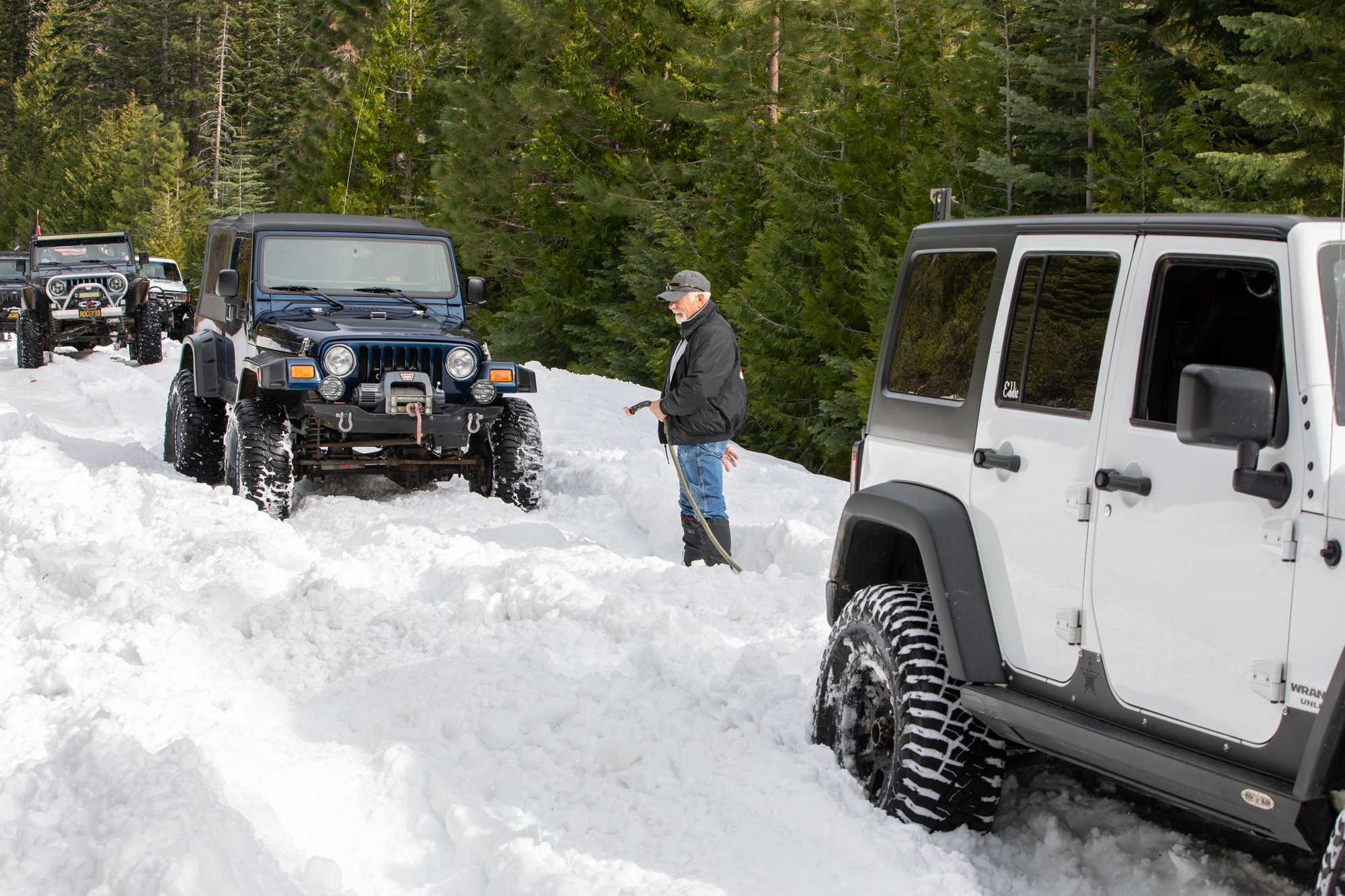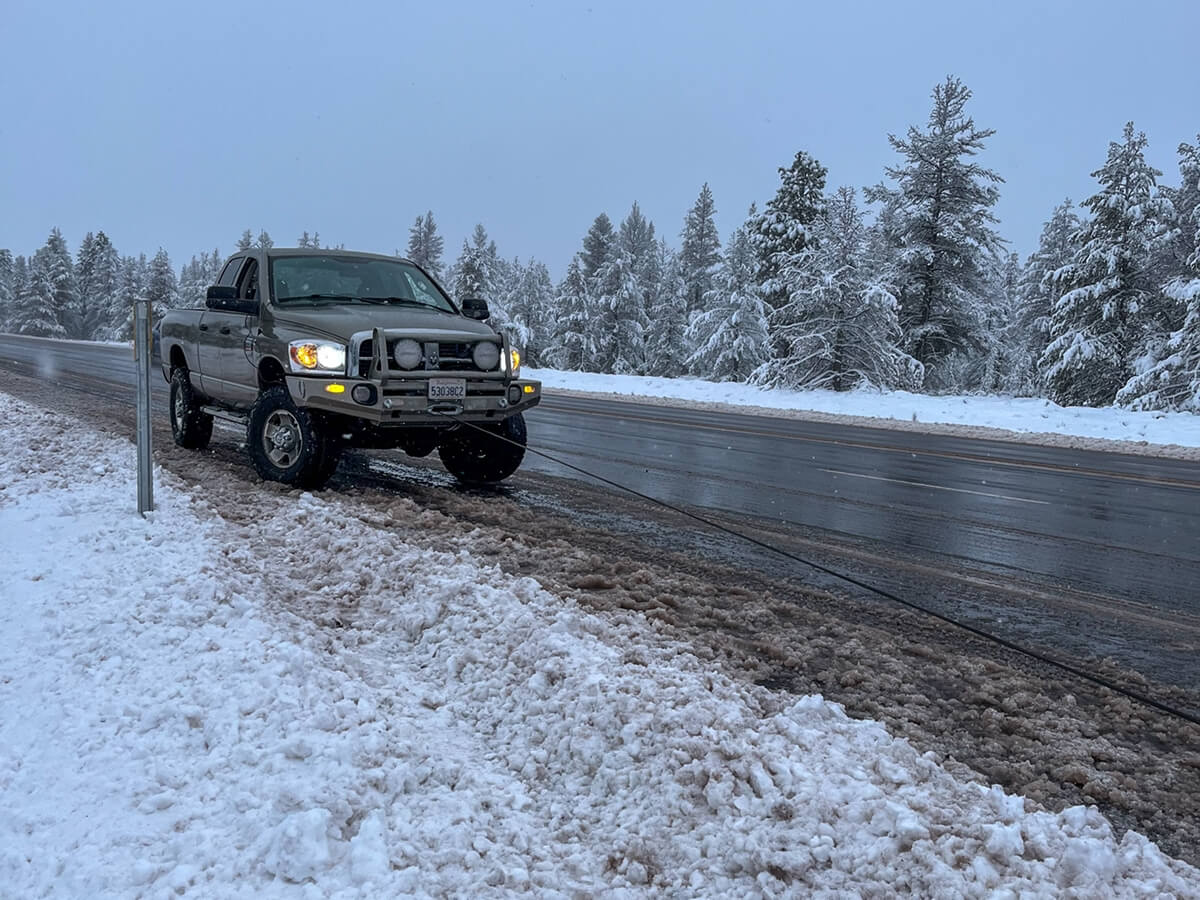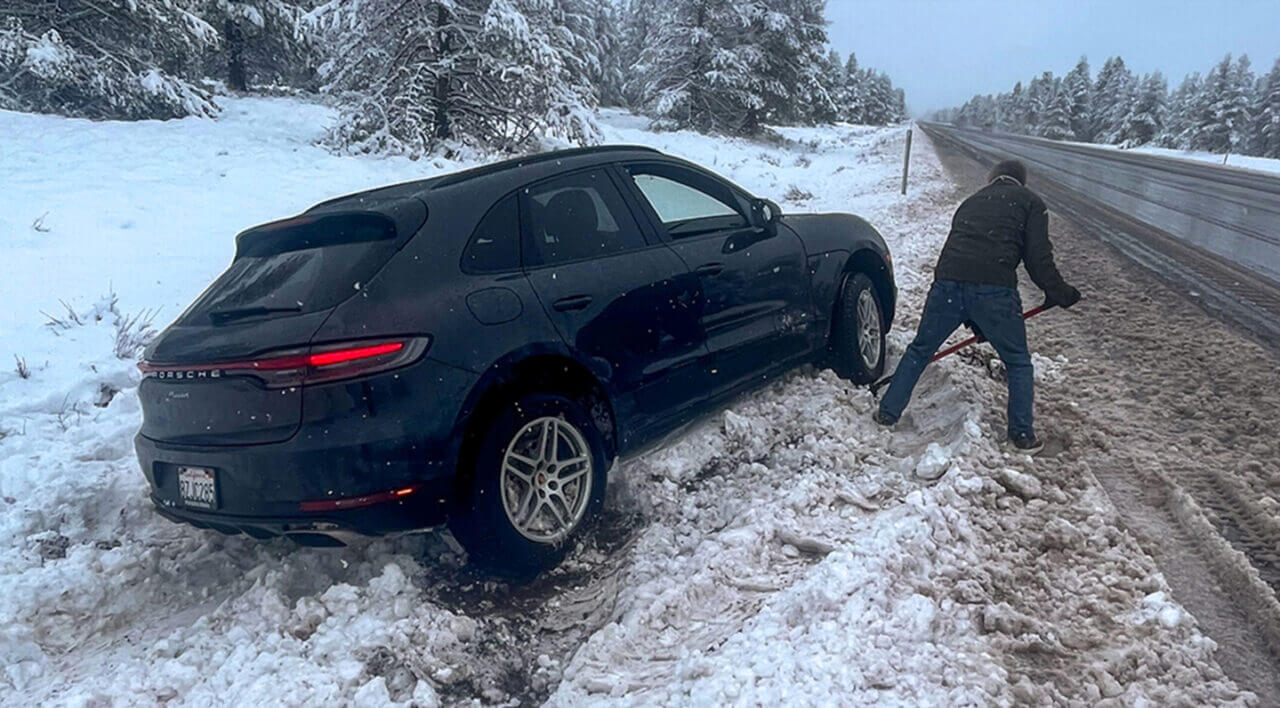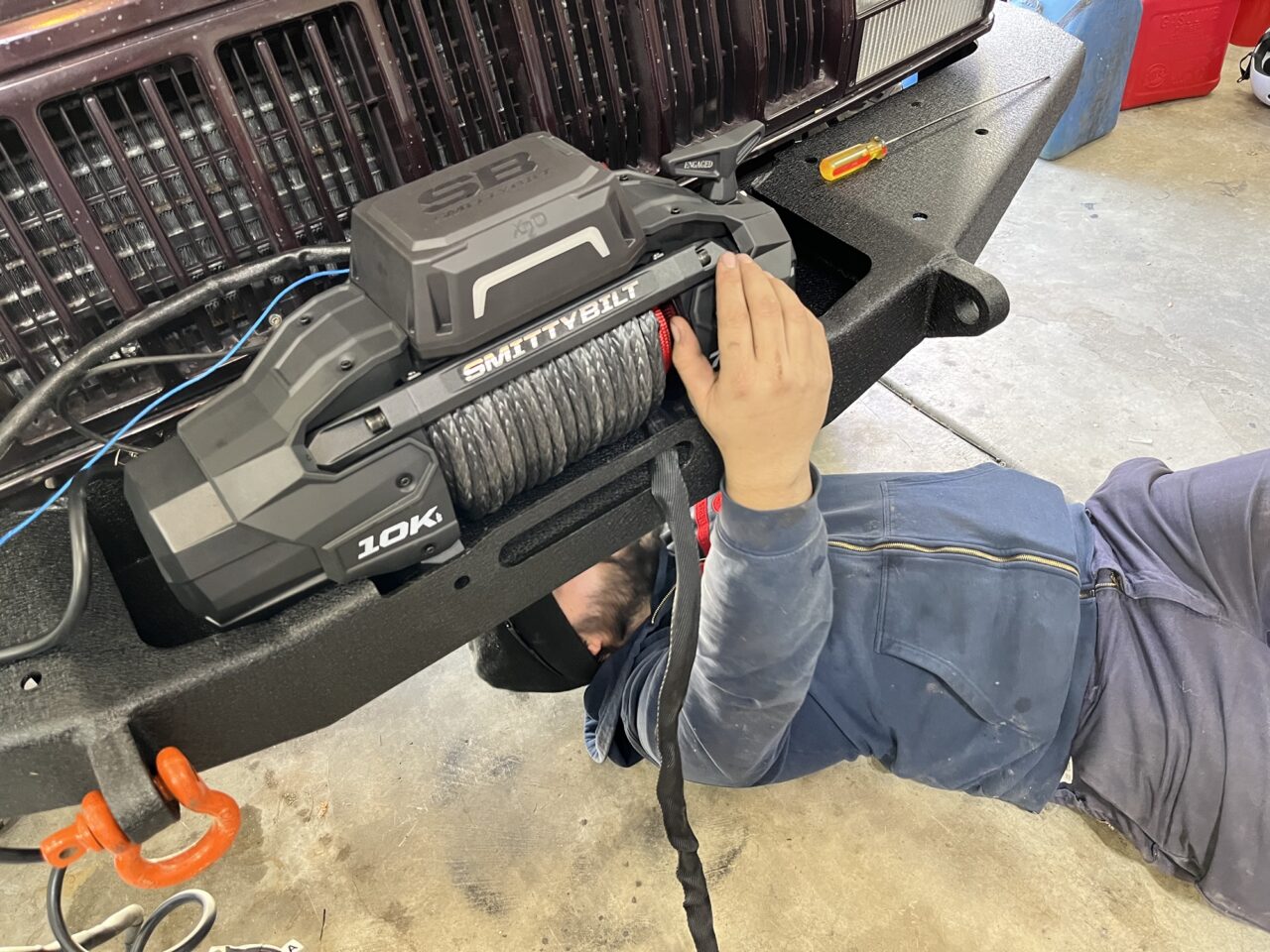
Winches are effective tools that help you free stuck vehicles by pulling them. A good winch helps vehicles get out of the water, mud, sand, snow, and even rocks. While the techniques for off-road winching and winter winching are different, the process is similar.
The key difference is that you need to focus on your winter winching technique. You’ll need some additional accessories for your winch like gloves, snatch blocks, and tree trunk protectors. In the snow, these accessories make the winching process much easier, especially for self-recovery.
Read on to learn more about self-recovery techniques for winter winching.

How to Use a Winch
Winches are simple machines that are easy to use. Most winches are used for off-road purposes but in the winter months having a winch for self-recovery can save your life. Fortunately, the proper winter winching techniques are learnable in a few straightforward steps.
The process is broken down into rigging the winch, pulling your vehicle, and removing the winch.
Rigging Your Winch
The first order of business when using a winch in the snow is to rig it. To rig your winch there are a few steps to follow.
- Begin by plugging in the remote control.
- Put on protective gloves that will keep your hands warm and safe.
- Look for a sturdy object like a tree to use as an anchor for your winch. Make sure it’s close and straight ahead of your vehicle.
- Locate and use the lever on the side of the winch to disengage the cable, which allows you to manually remove the cable.
- Drag the winch cable to the anchor to make sure it reaches.
- Wrap a trunk protector around the tree trunk with both straps facing you.
- Pull the pin out of the D-shackle and secure it to the tree trunk protector.
- Connect the winch to the D-shackle and make sure the tip faces up.
- Switch the lever on the winch back to “engaged.”
- Use the winch remote to tighten the cable until it has no slack.
Depending on your winch and the anchor, these steps will work for most winter rigging situations.
Pulling Your Vehicle
Next, it’s time to use your winch to pull your vehicle. Pulling your vehicle is known as self-recovery and doesn’t require another vehicle. Follow the steps below to pull your vehicle.
- Make sure the area is clear of people, wildlife, and other hazards.
- Spread salt along the area to melt snow and ice.
- Dig around the wheels of your vehicle if possible.
- Enter the driver’s seat of your vehicle and use the winch remote to begin pulling your vehicle.
- Gently press the gas to assist the winch as it pulls your vehicle. If your vehicle has no power, make sure it’s in neutral.
- Once your vehicle reaches flat and stable land stop using the winch remote.
- Make sure your vehicle can drive without winch assistance before removing the winch.
In most cases, following these steps will help you recover your vehicle in the snow.
Removing the Winch
The final part of your winter winching technique is to unrig the winch. The steps to remove the winch are found below.
- Detach the winch and D-shackle.
- Use your winch’s remote control to slowly reel the winch cable back into place.
- Unplug the remote from the winch and store it safely.
- Remove the D-shackle from the tree trunk protectors.
- Remove the tree trunk protectors from the tree and store them safely.
Once you follow all of these steps you’ll have successfully recovered your vehicle in the snow.

Should Your Winching Technique Change in the Snow
Your winching technique shouldn’t change in the snow. When using a winch it’s important to follow each step properly, even if it’s cold outside or if the ground is covered in snow or ice. Failing to follow basic winching principles will result in injury, damage to your vehicle, or damage to your winch.
Instead of changing your winching technique during the winter, modify it. The biggest modification to your technique will likely be how fast you pull your vehicle. In rocky and muddy conditions you can get away with pulling your vehicle faster. However, when working with snow or ice you need to move even slower than usual.
You also want to spend more time on preparation with all of your winch components. For example, check to see if synthetic ropes are frozen before attaching them to an anchor. It’s also a good idea to carry additional items like winter gloves, snow shovels, ice scrapers, salt, and sand.

Pro Tips for Winter Winching
Winter winching is similar to off-road winching but the cold weather, ice, and snow create unique challenges to overcome. Always make sure you use the right rope and bring the appropriate accessories.
Use the Right Rope
When using a winch there are a few types of ropes to choose from but synthetic and metal ropes are the most common options. Synthetic ropes are lightweight and cost-effective but they’re not the most durable. Also, synthetic ropes require cleaning with soap and water for maintenance.
On the other hand, metal wires are more durable but cost more. When it comes to winter winching techniques, metal wire is a better option. Freezing temperatures and moisture from the snow may cause synthetic lines to snap. If you do use synthetic lines in the winter, always clean salt and other grime after each use.
Always Be Prepared
Preparation is key when you’re winching in the winter. Make sure you bring the appropriate supplies with you to prevent complications. Examples of supplies to bring include snow shovels, ice scrapers, tire chains, salt, and things to place under your wheels for extra traction.
Aside from snow supplies, you also want to have the necessary supplies for winching. Make sure you have thick gloves, snatch blocks, tree trunk protectors, and shackles.
Stretch the Rope First
Winches aren’t ready to use right out of the box. While they might look like they’re in working order, you need to stretch the rope first. Stretching the rope prevents the winch from sinking between other layers of rope. When rope layers sink between other layers the line might get crushed. Stretching the rope is especially important in the winter because the chances of a cold rope sinking are higher.



2